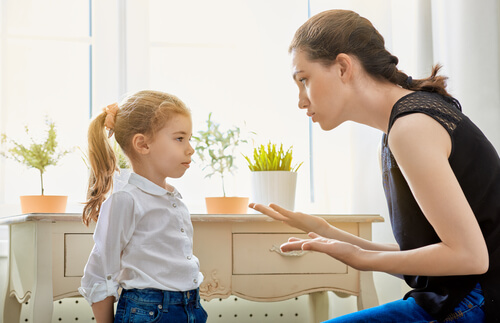Attachment and Parenting with PACE

According to the Attachment Theory, children are predisposed to seek security from their primary caregivers (Golding and Hughes, 2012). When there is a consistent and sensitive love, a secure attachment will develop in response. A secure attachment provides a sense of safety and security, regulating emotions, by soothing distress, creating joy, and supporting calm. This will set the secure base from which to explore.
Secure vs Insecure Attachment
The benefits of secure attachment will also have an impact on the child’s developing brain, organizing itself to provide the child with the best foundation for life: a feeling of safety that results in eagerness to learn, healthy self-awareness, trust, and empathy. However, if parents are unable to manage their own distress, they will be unable to calm and soothe. This will set the basis for insecure attachments, preventing the child’s developing brain from organizing itself in the best possible ways. This can inhibit emotional, mental, and even physical development, leading to difficulties in learning and forming relationships in later life.
Children have a number of behaviours that signal to their parents that they need to be comforted and nurtured (for example, crying, clinging or just following). Children also have exploratory behaviours that signal that they are ready to move away and explore the world. Sensitive parents are able to read these signals and consequently support the child to do so. This is the foundation for secure attachments. This memory of the relationship will set the basis for understanding how relationships work and will act as a guide for present and future relationships.
WHAT is PACE and WHY we use it?
The purpose of parenting with PACE is to help develop secure and loving connections.
PACE has 4 elements.
The first element of PACE is Playfulness.
Playfulness starts in infancy. The child is born into a relationship that is joyful, attentive and absorbed with him and his uniqueness; the experience of playfulness is the first experience of a positive and unconditional relationship (Golding &Hughes, 2012). According to the same authors, we can be at our most connected when we play with our children.
The second element is Acceptance.
Accepting your child’s inner life without trying to change it means experiencing what your chid is experiencing, understanding it as it is and not as you might want it to be (Golding &Hughes, 2012). To deeply understand the concept of acceptance, let’s talk about the feelings of shame and guilt. In their book, Creating Loving Attachments, Golding and Hughes (2012) provide an excellent explanation of these feelings. They say that Shame arises from the sense that “I am bad” or “I am unlovable”. Because of this, feelings of shame are avoided by either denying the feeling (“I don’t care”) or denying the behaviour that activated shameful feelings (“I didn’t do it”). Shame tends to elicit lying and making excuses (“It was an accident”), putting the blame onto other people or minimising the consequence of the behaviour. Shame is such a painful feeling that when confronted with the behaviour, thinking about it will be avoided (“I don’t want to think about it”). Shame interferes with conflict resolution and the repair of a relationship because it interferes with attachment behaviours such as coming to a parent for support. The shame of making a mistake is likely to be the reason why a person will not learn from their mistakes.
Guilt on the other hand is associated with the behaviour (“I did something wrong”). The person acknowledges and apologises for the behaviour and will try to repair the relationship. Guilt is associated with empathy whereas shame is not. Guilt precedes shame in the developing child so when a child is comforted and reconnected, the experience of shame will reduce. Repairing the relationship through reconnection will provide the child with the psychological reality that she is unconditionally accepted and loved even if the behaviour is not (Golding &Hughes, 2012) : “I am not angry with you, I am angry at what you did”. If the parent doesn’t repair the relationship by reconnecting but instead the parent decides to not talk to the child this is likely to elicit shame rather than guilt. A long-lasting experience of the emotion of shame could trigger numerous psychological problems such as depression, anxiety and low self-esteem. Parenting with unconditional acceptance means accepting your child’s inner life and only evaluate their behaviour, accept that your child is not the same as you, get to know your child through acceptance, non- judgmental curiosity and safety.
The third element of PACE iscuriosity. Curiosity means expressing interest in your child and her understanding of her own experience and of the experience of others.
Curiosity also shows how much we love, respect and value our child (Golding &Hughes, 2012). Curiosity is nurtured within relationships. Parent and child make sense of the experience together. The child learns to think, actively exploring their inner life, being in touch with it and learning how she thinks or feels about experiences. If the child doesn’t feel safe or secure, spontaneous and unrestricted exploration becomes difficult. Anxiety interferes with curiosity; it overwhelms the curiosity system so it will determine what we think, what we do and how we feel. When Anxiety is in control; behaviours will not focus on exploration but avoidance of the discomfort created by anxiety. Another behaviour is hide the anxiety away, not to show feelings and appear interested in exploration. However, this exploration is uncurious because the primary focus is on safety. While appearing to be focused away from the parent, the child is very attentive to the parent’s needs and moods. In this way, the child tries to keep the parent close, monitoring the parent’s availability and suppressing negative feelings to ensure this availability is maintained. Curiosity and exploration shut down. The child learns to avoid discomfort instead and becomes less playful and explorative.
The last element of PACE is Empathy.
Empathy determines how we relate to other people. It helps us to experience others with their own thoughts and feelings. Empathy reflects that “we get it”. We understand and accept the internal world of the other person and we are prepared to enter that internal world and share it with him (Golding &Hughes, 2012). Consistent and sensitive interactions between parent and child form the basis of the development of empathy. The experience of a relationship that fails to help the child to understand the world around her will be a relationship that fails to support the development of the ability to understand and relate to the perspective of others. In communicating empathy for the child’s feelings a parent needs to focus more on howto respond rather than what to respond. Parenting with empathy means that the parent focus more on the experience not the behaviour and the intention to be with, not evaluating or fixing.
Remember to use these non-verbal signals when communicating to your child to support secure attachments:
· Make eye contact to express interest which will also help to maintain the flow of the conversation between parent and child
· Calm and attentive facial expressions that will express security
· Tone of voice that expresses calmness, interest and understanding
· Gentle touch on the arm or reassuring pat on the back
· Relaxed body language and open posture, leaning towards
· Pace of your speech
Written by: Karina Feldmann, Registered Psychologist at ACPC
References
Golding &Hughes (2012) Creating Loving Attachments
Jeanne Segal, Ph.D., Marti Glenn, Ph.D., and Lawrence Robinson (2018). What is secure attachment and bonding? Retrieved from https://www.helpguide.org/articles/parenting-family/what-is-secure-attachment-and-bonding.htm
Raising children Network (2016). Attachment: the basics. Retrieved from http://raisingchildren.net.au/articles/attachment.html



